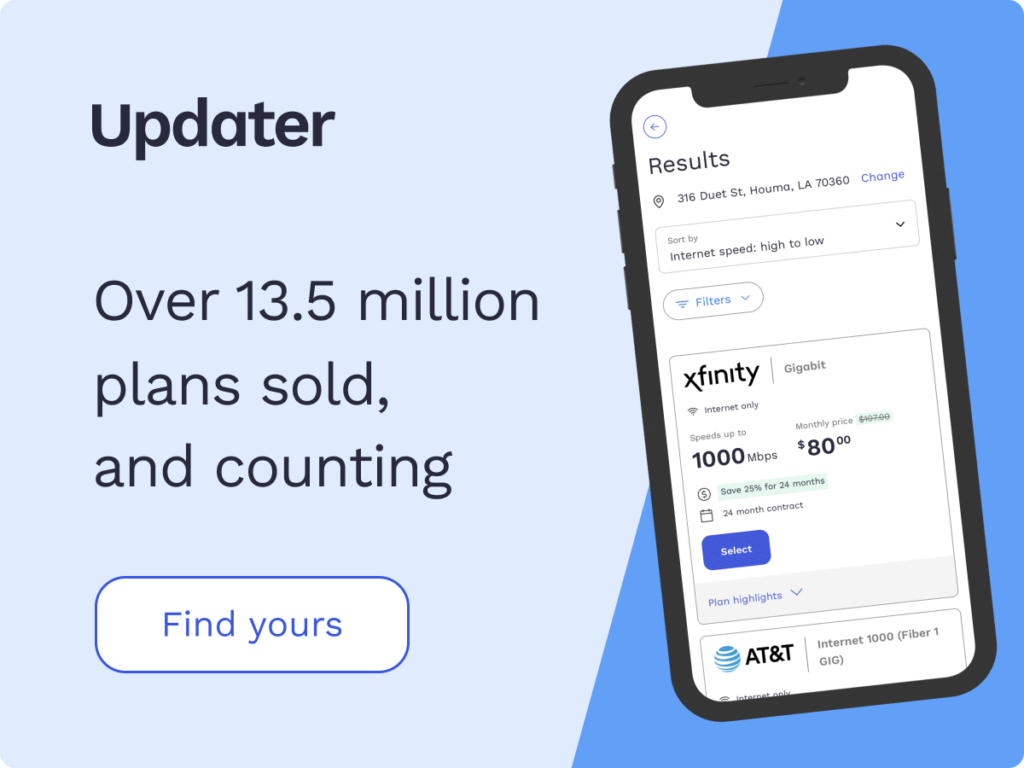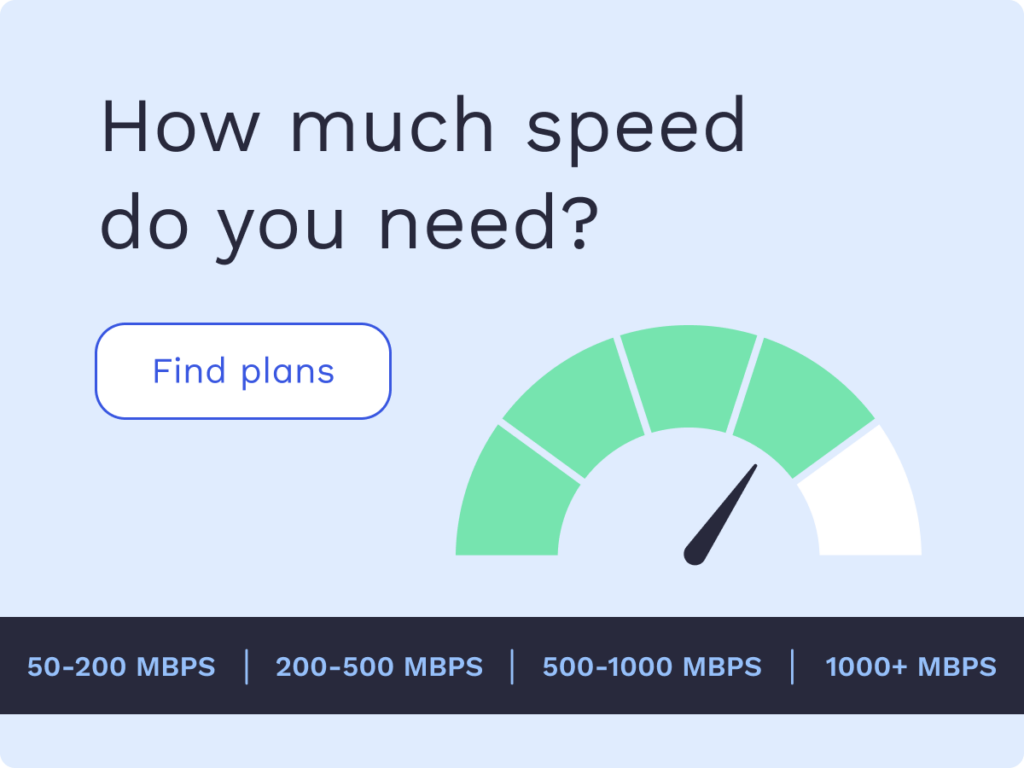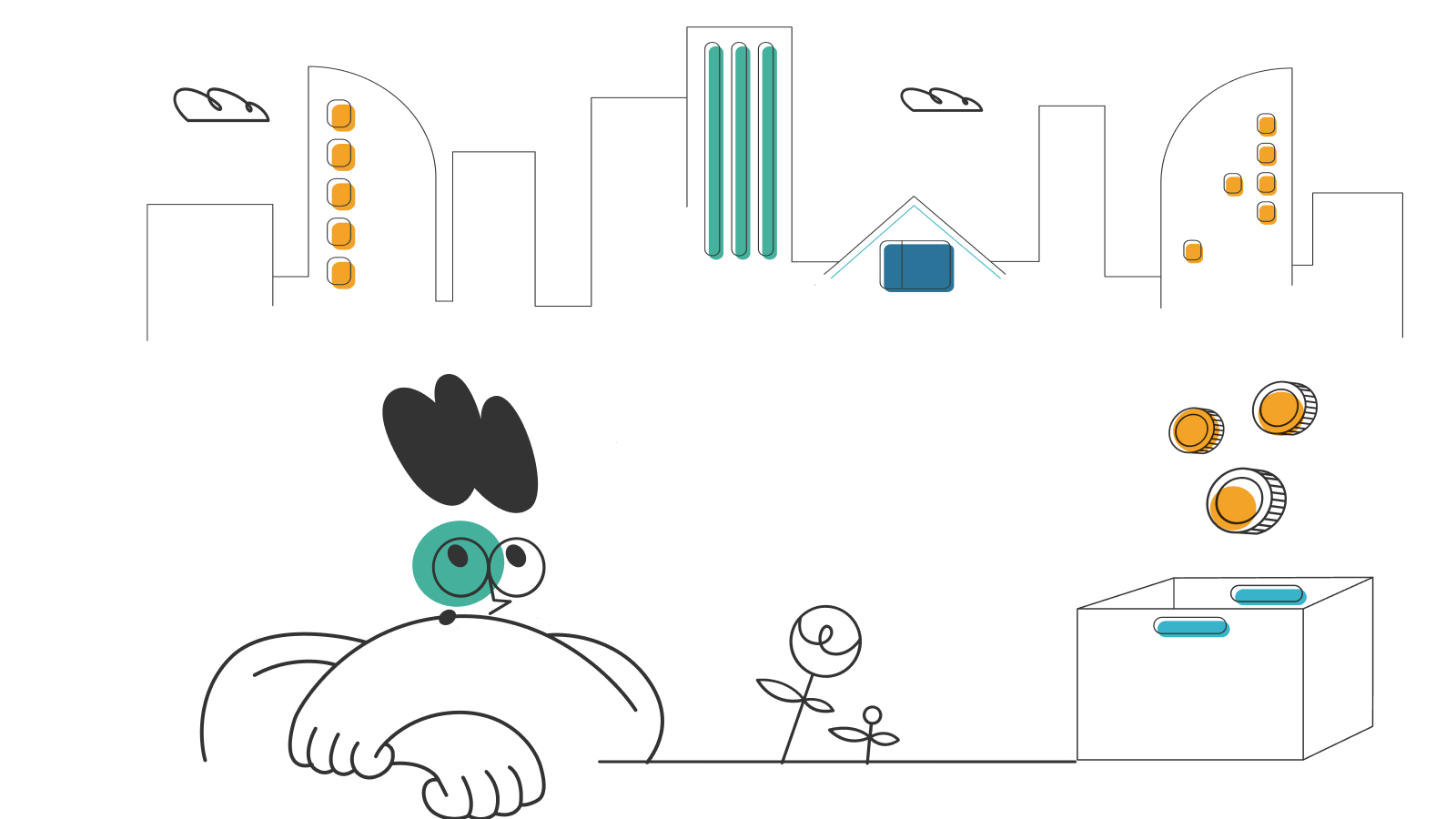A Guide to the Top Cities for Broadband

When it comes to internet speeds and connectivity, some places in the US fare better than others, with urban areas usually beating out rural ones. If you’re considering moving and need lightning-fast internet, there are a few locations to put on the top of your list.
While you’ll often find high-speed internet options in major US cities, some smaller cities are also worth a look. If you work remotely, moving to a smaller city can be far more affordable while letting you keep up with all your online activities.
To help you learn about options, we’ve created this guide to the top US cities for internet connectivity and speed, along with some smaller cities with good broadband availability.
- Top cities in the US for broadband internet
- Smaller US cities with good broadband options
- Frequently asked questions (FAQs)
Top cities in the US for broadband internet
When you’re looking for a place to live, you’ll want a city that offers both an excellent quality of life and fast internet. The cities below rank well on the U.S. News and World Report list of Best Places to Live in the U.S. What’s more, they offer internet speeds of 1Gbps to some of their residents.
Austin, TX
Austin offers residents speeds up to 1000Mbps, with about 58% of Austin’s population having access to those speeds. The city is served by four major internet service providers (ISPs), including AT&T, DISH, Google Fiber, and Spectrum. Internet types available include DSL, cable, fiber, and satellite. The starting price for a gigabit internet-only plan is $80/month from AT&T.
Colorado Springs, CO
Colorado Springs, which is home to the US Olympic Training Center and Olympic Committee, is also the second best US city to live in. The city enjoys speeds of up to 2000Mbps, which are available to 15% of the city’s population. Three prominent ISPs serve the area, including CenturyLink, DISH, and HughesNet, with internet options including DSL, cable, fiber, and satellite. Starting price for an internet-only plan is $29.99/month from Xfinity, while the starting price for a gigabit internet-only plan is $65/month from CenturyLink.
Denver, CO
Residents of Denver can enjoy internet speeds of up to 2000Mbps. The city is served by several major ISPs, including CenturyLink, DISH, HughesNet, and Xfinity, with available internet types including DSL, cable, fiber, and satellite. Starting price for a gigabit internet-only plan is $65/month from Centurylink, while the starting price for an internet-only plan is $29.99/month from Xfinity. However, the highest-speed internet service is only available for 40% of the population of Denver.
Des Moines, IA
Des Moines offers internet speeds of up to 1000Mbps. The city is served by three major providers, including Centurylink, Mediacom, and HughesNet.
Today, only 5% of the population has access to the fastest speeds. Internet types available in Des Moines include DSL, cable, fiber, and satellite. The starting price for an internet-only plan is $29.99/month from Mediacom, while a gigabit internet-only plan starts at $65/month from Mediacom.
Fayetteville, AR
Some residents in Fayetteville enjoy speeds up to 1000Mbps. The city is served by three major ISPs, including AT&T, Cox, and HughesNet. Internet types available include DSL, cable, fiber, and satellite. Today, only 15% of the city has access to 1000Mbps speeds. The starting price for an internet-only plan is $19.99/month from Cox, while a gigabit plan starts at $80/month from AT&T.
Houston, TX
Several ISPs offer gigabit speeds in Houston, including EarthLink, Spectrum, Xfinity, and AT&T. Most of the plans top out at 1000Mbps, but AT&T offers plans reaching 5000Mbps speeds, the fastest you can get anywhere. Smaller internet providers like enTouch offer fast fiber internet services in limited areas. Internet services available in Houston include DSL, cable, satellite, and fiber.
Jacksonville, FL
AT&T and Xfinity are two of the most popular ISPs in Jacksonville, offering gigabit download speeds in neighborhoods such as Pumpkin Hill and Cisco Gardens. AT&T offers the fastest speeds of up to 5Gbps with their fiber internet service, while Xfinity offers the second-fastest speeds of up to 1.2Gbps. Other competitors in the market include Verizon and T-Mobile, with both offering 5G internet options. Internet service available in Jacksonville include DSL, cable, satellite, 5G, and fiber. The starting internet price for Jacksonville residents is $39.99/month.
Phoenix, AZ
Phoenix is the capital city of Arizona and is home to beautiful resorts, restaurants and golf courses. Several major ISPs serve the city, including CenturyLink, Cox, HughesNet, and Viasat. Both CenturyLink and Cox offer speeds at or near 1Gbps. The average starting internet price in the city is around $50/month. Internet technology types include DSL, cable, satellite, and fiber.
Smaller US cities with good broadband options
If you work remotely, you may have the opportunity to live in a smaller city that offers high-speed internet to most residents. This option can give you the best of both worlds: a more affordable cost of living and the connectivity you need to get the job done.
Charleston, WV
Charleston is the capital city of West Virginia, boasting an array of theaters, a science museum, a planetarium, and robust downtown. This affordable city enjoys fast internet speeds of 940Mbps, which is available to 55% of the population. It is served by seven major providers, including Xfinity, Suddenlink, EarthLink, Frontier, and Viasat. Internet services available include cable, DSL, and fiber. You can enjoy fast and reliable internet for as low as $45/month.
Natchez, MS
Natchez is a classic Southern city with a legendary trail and several gorgeous antebellum mansions. The city enjoys internet speeds of up to 1000Mbps and is served by four ISPs including AT&T, Sparklight, InLine, and Viasat. Starting monthly prices for plans are $30 from AT&T, $39.95 from Decatur Telephone Company, and $45 from Sparklight. Internet types include DSL, cable, and fiber. With 100% coverage, all residents of Natchez will have access to cable internet service.
Rosewell, NM
Best known for Area 51, Roswell is a fast-growing community that offers an array of internet options. The city features several well-known ISPs, including CenturyLink, HughesNet, and Viasat, along with a host of smaller providers. Sparklight offers a 1000Mbps cable connection that is available to 99% of Roswell residents. Other internet types available include DSL, satellite, fixed wireless, and fiber. Today, approximately one-quarter of Roswell residents have access to high-speed fiber internet.
Terra Haute, IN
Nestled along the western Indiana border, Terra Haute is home to approximately 60,000 residents. Several top-name internet providers—including Spectrum, Frontier, HughesNet, and Viasat—serve the city. While cable and DSL are available to all residents, just 1% of Terra Haute locals currently have access to fiber. However, the top internet speeds in the city still reach 1000Mbps, with a cable plan from Spectrum and fiber and fixed wireless from regional provider Joink. One-hundred percent of Terra Haute residents have access to speeds of at least 25Mbps.
Weirton, WV
If you are looking for an affordable city with reliable high-speed gigabit internet, consider Weirton. The city is served by major providers, including Xfinity, Blue Devil Cable, Frontier, and Viasat. You can get internet service starting at a price of $30/month. The internet provider types available in Weirton are cable and DSL, with almost 100% coverage.
Frequently asked questions (FAQs)
What is the average US internet speed in 2022?
Internet speeds vary throughout the US, with Maryland having the highest average speeds at 196.2Mbps and Alaska having the lowest at 58.6Mbps. Recent years have seen internet speeds in the US increasing steadily, in part due to increased demand for fast speeds as more Americans have been working from home. Also, several parts of the US have benefited from expanded access to technology—such as 5G and fiber internet—which has boosted speeds.
What is good internet speed?
Internet speeds of 500 to 1000Mbps will support households that require lots of bandwidth, although 100Mbps is adequate for most homes. If you have a small household with light internet needs—such as browsing, posting on social media, and some video watching—lower speeds, such as 25Mbps, may suffice. At these lower speeds, however, you may experience buffering, especially if multiple people are competing for bandwidth at once.
What types of broadband internet are available?
Broadband internet is currently offered by the following types of connections:
- Satellite
- Wireless
- Fiber
- Cable
- DSL
Depending on where you live, you may have a choice of broadband internet technologies. It’s essential to learn about each broadband option to help you choose the best one for your needs.
How does broadband internet work?
Broadband allows users to access information through the internet via high-speed transmission technologies. The transmission is digital, meaning images, texts, and sound is transmitted as bits of data. The transmission technologies move the bits faster compared to traditional telephone or wireless connections.
What is the current standard for broadband internet in the US?
Currently, the Federal Communications Commission (FCC) defines broadband access as an always-on connection that delivers 25Mbps download speeds and 3Mbps upload speeds.
Why is the internet in rural areas generally slower than in urban ones?
There are fewer potential customers in rural areas, and they are more spread out. That means it is less cost-effective for major ISPs to build the required high-speed broadband networks. Because major ISPs are concerned with maximizing profits, they often overlook sparsely populated areas and focus on more profitable urban and suburban areas.
That said, broadband is available in many rural and remote locales, and more options become available as ISPs continue to expand their service areas.
How can I choose a broadband provider for my home?
In many areas, you’ll find several competing internet options. Choosing the right one for you requires doing a bit of homework. A smart first step is clarifying the internet needs and the number of users in your home. That analysis will help you understand the minimum speed you need.
*Pricing varies by location and availability. Speeds may vary. All prices subject to change; for current pricing and availability visit our internet service page. Prices as of 5/31/22.
Disclosure | Updater articles are based on our own data and research, independent from partner relationships. We are not compensated by partners for information and opinions presented here. Our Editorial Terms of Service can be found here.














